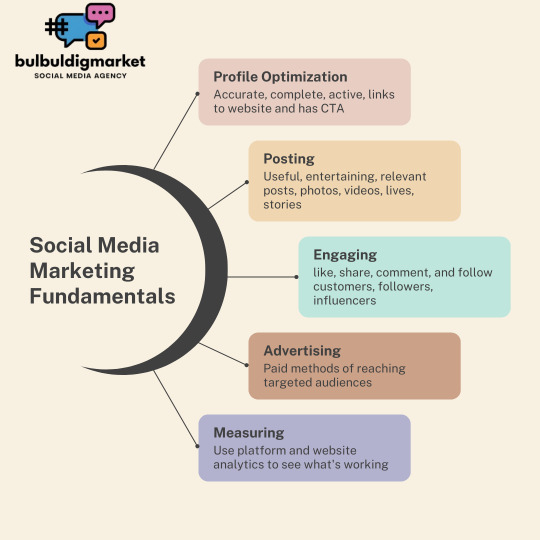#strategybuilder
Explore tagged Tumblr posts
Link
#trading-strategy#AutomatedTrading#AlgoTrading#TradingAutomation#StrategyBuilder#SystematicTrading#StrategyDevelopment#AITrading#TechnicalAnalysis#AlgorithmicTrading#AutomatedStrategy#MarketAutomation#TradingTechnology#AutomatedSystems
1 note
·
View note
Text

If Tomyrus was the hero of the season for Civilization Eras and Allies this year, in Era of Fortune this team or similar reigned supreme. Here's how it works. Pericles gives an extra attack after a set amount of attacks by your team. Sun Tzu heals and forces your strongest attacker to make an extra attack, and Ceaser is the strongest healer in the game. What you'd do is use chip damage from Sun Tzu and Ceaser's basic attacks to trigger Pericles to just keep attacking. You'd win or draw almost constantly unless you were severely countered. Teams with Pericle and Sun Tzu were so common place this season that it could be almost impossible to win a siege without using zerg rush tactics. Other variants of this team included Pericles with Seondak or Shakka (which was terrible), and any of the 3 versions of the Pericles bond. It's going to be the army to watch next season
0 notes
Text
💡 What if your next revenue boost isn’t in getting more customers—but in using what you already have?
Here’s something most businesses miss:
You’re sitting on tons of valuable data—customer reviews, product returns, support tickets, weekly routines—but rarely tapping into it effectively.
That’s where AI agents come in.
Imagine this:
Multiple customers return the same shirt and say, “It’s too tight.” ➡️ That’s a product signal: Maybe it’s time to adjust the sizing or launch a new fit.
Your team repeats the same task every Monday morning. ➡️ AI can automate that, saving hours every week.
The real opportunity? Not just working harder, but working smarter—with your existing data.
At CIZO, we help businesses unlock hidden revenue through AI-powered insights and automation. Because sometimes, the goldmine isn’t out there—it’s right inside your systems.
📊 Ready to uncover your hidden potential?
Let’s talk.
#ai#innovation#mobileappdevelopment#cizotechnology#techinnovation#ios#app developers#iosapp#mobileapps#appdevelopment#aiforbusiness#digitaltransformation#airevolution#futureoftech#techtrends#machinelearning#datadrivendecisions#competitiveanalysis#strategicinsights#strategybuilding#introspectivemarketresearch#businessgrowth#revenueboost#businessautomation#customerexperience#salesautomation#smartbusiness#aiinsights
0 notes
Text
#MarketResearch#BusinessGrowth#DataDrivenDecisions#CompetitiveAnalysis#Innovation#StrategicInsights#StrategyBuilding#IMR#IntrospectiveMarketResearch
0 notes
Text
A Strategic Blueprint for Developing High-Impact Training Modules

Discover a complete blueprint for designing high-impact training modules to boost employee performance, engagement, and skill development.
Read more: https://corecompetency.net/insights/a-strategic-blueprint-for-developing-high-impact-training-modules/
0 notes
Text

Monday.com delivers a tailored CRM experience that enhances internal coordination and maximizes client satisfaction. As a cloud-based CRM for teams, it enables full customization, helping companies align their strategies and hit their revenue targets.
#Monday CRM#CRM software#customer relationship management#CRM solutions#CRM platform#customer management#sales crm software#crm system monday#best CRM for small businesses#CRM tools#Sales CRM#it#technology#it jobs#tech#crm benefits#crm services#sierra consulting#current events#technews#crm#crm solution#crm strategy#crm integration#task management#strategic#strategybuilding#marketing strategy#businesssolutions#digitaltransformation
0 notes
Text
Corporate Goverenance : Introduction

Imagine you’re a shareholder in this company, holding a small stake in its success. You’ve invested your hard-earned money, and in return, you expect the company to flourish. But you don’t sit in the boardroom to make day-to-day decisions. You rely on a group of directors to steer the ship in the right direction. Corporate governance is the set of rules, practices, and processes that dictates how this board, and the company at large, operates. It’s the invisible hand ensuring that the board makes decisions that benefit not just shareholders, but all stakeholders i.e. employees, customers, the community, and even the environment.
Corporate governance isn't just about following the law or ticking boxes to meet regulatory standards. It’s about trust. It’s about ensuring that those in charge of the company are accountable to those who have a stake in its success. It’s about making sure that the interests of the people who run the company align with the interests of those who depend on it.
In simple terms, corporate governance is the framework that guides a company’s direction, ensuring that power is not abused, and decisions are made in a transparent and responsible manner.
A Look Back in Time
Let’s step back in time to understand where this framework came from. The story of corporate governance begins not with regulations, but with the growth of large companies. In the early days of business, the people who owned the company were often the same people who ran it. But as businesses grew larger and more complex, it became impossible for owners to manage everything themselves. Ownership and control were separated.
Imagine a grand factory in the early 20th century, built by a visionary entrepreneur. He started the company, built it from the ground up, but as it expanded, he couldn’t oversee every part of it. Instead, he hired managers to run the operations. Over time, more shareholders invested in the company, but the control stayed with the managers. This division of ownership and control created a need for a new system of oversight—one that would hold the managers accountable to the shareholders, ensuring that the company was run in their best interests.
This was the birth of corporate governance—a system designed to ensure that the people running the company were doing so ethically, responsibly, and for the benefit of all stakeholders, not just for personal gain.
Fast forward to the 20th century, when corporate governance took center stage during major corporate scandals. The downfall of Enron, the 2008 financial crisis, and the collapse of Lehman Brothers all exposed deep flaws in corporate governance structures. The boards had failed to oversee the actions of executives properly, and companies had made decisions that were reckless, unethical, and disastrous. The world took notice.
The need for stronger governance frameworks became clear. In response, new regulations and reforms were put in place to hold corporate leaders accountable. It ensures that the executives are not only focused on financial performance but also on delivering value to the community, treating employees ethically, and maintaining transparency with investors.
In a country like India, where family-run businesses dominate the corporate scene, corporate governance has taken on an even greater significance. Historically, many of India’s largest corporations were established by visionary entrepreneurs, and control often stayed within the hands of a few families. As these companies grew, governance needed to evolve to prevent issues of concentration of power and to make management more accountable. Corporate governance structures were introduced to ensure that businesses not only focused on profit maximization but also on ethical practices and long-term stability. India’s journey with corporate governance is not a short one. Let’s rewind to the early days of India’s post-independence industrialization. The Indian economy, primarily agrarian at the time, began to shift with the establishment of large public-sector enterprises and a few private enterprises that became the backbone of the country’s industrial infrastructure.
In the 1990s, when India underwent a series of economic reforms. country began to open up its markets, inviting foreign investment, and expanding its corporate sector. This period marked the beginning of globalization for Indian businesses, and with it, the need for formal governance structures became glaringly evident.
In the late 1990s, a series of corporate scandals in India shook public trust in businesses. The Harshad Mehta Scam (1992), where a stockbroker manipulated the stock market, and the Ketan Parekh Scam (2001), in which another stockbroker’s malpractice led to a massive financial crisis, highlighted the vulnerabilities in India’s corporate governance systems. These scandals raised alarms about the lack of transparency, accountability, and regulation within the Indian corporate sector.
In response to these challenges, India began to strengthen its governance frameworks. In 2000, the Securities and Exchange Board of India (SEBI) introduced the Clause 49 of the Listing Agreement, which set out guidelines for corporate governance in India. These guidelines focused on the independence of directors, the responsibilities of the board, and the need for transparent financial reporting. This marked a significant step toward ensuring that companies in India operated ethically and in the best interests of all stakeholders.
However, it wasn’t just SEBI regulations that shaped Indian corporate governance. The Naresh Chandra Committee (2002) and the Raghuram Rajan Committee (2014) also contributed to the reform process by emphasizing the importance of independent boards, ethical practices, and the need for more stringent disclosure norms.
Today, the Companies Act 2013, SEBI’s Listing Obligations and Disclosure Requirements (LODR), and various codes of conduct have created a regulatory environment that demands better transparency, fairness, and accountability in India’s corporate world
#board#board of director#corporate governance#human resource#hr#era: strategy#strategybuilding#organizational behavior
0 notes
Text


TOGETHER WITH:
Hello
Quote of the day...
"Resilience isn't about never falling; it's about building a toolkit of strategies that help you rise again with greater wisdom. The breath that centers you, the boundaries that protect you, the compassion you extend to yourself—these are the quiet strengths that transform overwhelming moments into opportunities for growth."Karma Gaia
In Today's Email:
7 Resilience Strategies Therapists Use Themselves When Life Gets Overwhelming…
Did you know? 43% reduction in acute stress response markers…
Yogapedia: Today’s pose of the day...
IMAGE OF THE DAY
LEARN TODAY:
7 Resilience Strategies Therapists Use Themselves When Life Gets Overwhelming
Even the professionals who guide others through emotional turbulence need their own coping mechanisms. Therapists face burnout, compassion fatigue, and personal challenges just like everyone else. The difference? They've mastered practical resilience techniques that work—and use them in their own lives. Here are seven powerful strategies that therapists rely on when life becomes overwhelming.
1. The 5-5-5 Breathing Reset
When anxiety spikes, therapists don't just tell clients to "take a deep breath"—they practice structured breathing interventions themselves. The 5-5-5 technique involves inhaling for 5 seconds, holding for 5 seconds, and exhaling for 5 seconds.
"I use this between sessions when I'm feeling emotionally flooded," says clinical psychologist Dr. Maya Chen. "It activates the parasympathetic nervous system in just 90 seconds, giving me immediate physiological relief and mental clarity."
2. Scheduled Worry Time
Therapists don't suppress their worries—they contain them. Many block 15-20 minutes daily as designated "worry time" to process anxieties without letting them consume the entire day.
"When worries arise outside my scheduled time, I jot them down to revisit later," explains therapist James Moretti, LCSW. "This simple boundary prevents rumination from hijacking my day while still honoring that these concerns need attention."
3. The Perspective Shift Question
When facing obstacles, therapists reframe situations by asking: "What would I tell a client facing this exact situation?"
"This question creates instant emotional distance," notes family therapist Sonia Williams. "It bypasses my emotional brain and accesses my rational, solution-focused thinking. I'm consistently more compassionate and wise with myself when I use this technique."
4. Micro-Self-Care Integration
Rather than waiting for the elusive "self-care day," therapists integrate tiny restorative moments throughout their day.
"I practice micro-self-care—60-second interventions I can use between clients," says trauma specialist Dr. Kai Park. "This might be stretching, applying a scented lotion, or stepping outside for fresh air. These brief resets prevent exhaustion better than waiting for larger self-care opportunities that might never materialize."
5. The Validation-Before-Solution Rule
When overwhelmed, therapists validate their feelings before attempting to solve problems.
"I literally say to myself: 'It makes perfect sense you feel this way given what's happening,'" shares grief counselor Eliza Montgomery. "Only after acknowledging my emotional reality do I move toward solutions. Skipping validation always backfires."
6. Physical State Changes
Therapists recognize that mental states are connected to physical states, and deliberately change their physiology to shift their psychology.
"When I'm stuck in negative thought patterns, I don't try to think my way out—I move my body instead," explains neuropsychologist Dr. Theo Jackson. "A brisk 10-minute walk, dancing to one energetic song, or even splashing cold water on my face creates an immediate state change that interrupts the mental loop."
7. The 'Tomorrow Self' Technique
When motivation wanes, therapists make decisions based on how their future self will feel.
"I often ask myself: 'What can I do now that my tomorrow self will thank me for?'" says positive psychology practitioner Leila Hassan. "This creates immediate motivation and shifts my perspective from short-term comfort to longer-term wellbeing."
These strategies aren't just professional knowledge for therapists—they're daily practices that form the foundation of their personal resilience toolkit. By implementing even one or two of these techniques into your own routine, you can begin building the same psychological strength that helps mental health professionals weather life's inevitable storms.
Looking for a structured way to develop these resilience skills? The Coping and Resilience Toolkit Journal provides 18 evidence-based exercises with clear instructions to build your emotional strength day by day.
1 note
·
View note
Text

Social media is a powerful tool for communication, engagement, and content sharing. It allows individuals and businesses to build relationships, grow their presence, and connect with audiences worldwide. Key elements include content creation, audience engagement, and data analysis. Crafting a consistent brand voice and developing a clear social media strategy are essential for success. By leveraging platforms effectively, users can boost brand awareness, drive traffic, and achieve specific goals. For more insights on social media strategies and tools, visit social media and explore ways to enhance your digital marketing efforts.
1 note
·
View note
Text
How to Create 30 Days of High-Impact Content in Just a Few Hours
Struggling to keep up with content creation? You’re not alone. Most entrepreneurs and creators hit the wall when it comes to consistently producing engaging content that actually drives results.
That’s why I use the 30-Day Content Domination System—a step-by-step strategy to batch-create an entire month’s worth of posts in just a few hours. It helps you:
✅ Plan strategically – Know exactly what to post and when.
✅ Save time – No more daily content stress.
✅ Boost engagement – Create content your audience loves.
✅ Increase visibility – Stay top-of-mind effortlessly.
If you want to stop scrambling for content ideas and start showing up like a pro, this system is a game-changer.
Want the full breakdown? Drop a “YES” in the comments, and I’ll share the details
#affiliatemarketing#content creator#social media#business#strategybuilding#marketing#viralpost#viral trends
0 notes
Text
#recruitment#hiring and recruiting#it recruiting agency#hiring#employers#strategybuilding#marketing strategy#strategicinsights#strategies
0 notes
Link
#user-friendly tools#ArtificialIntelligence#AutomatedTrading#TradingAutomation#StrategyDevelopment#StrategyBuilder#AlgoTrading#AutomatedSystems
1 note
·
View note
Text
0 notes
Text
#MarketResearch#BusinessGrowth#DataDrivenDecisions#CompetitiveAnalysis#Innovation#StrategicInsights#StrategyBuilding#IMR#IntrospectiveMarketResearch
0 notes
Text
https://payhip.com/b/KoHxd
0 notes
